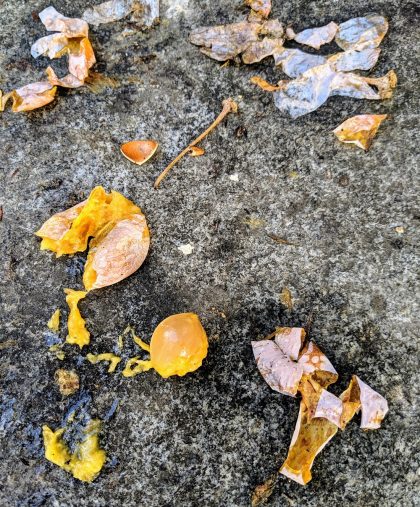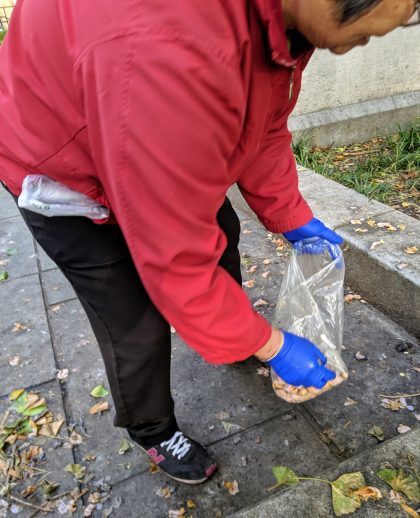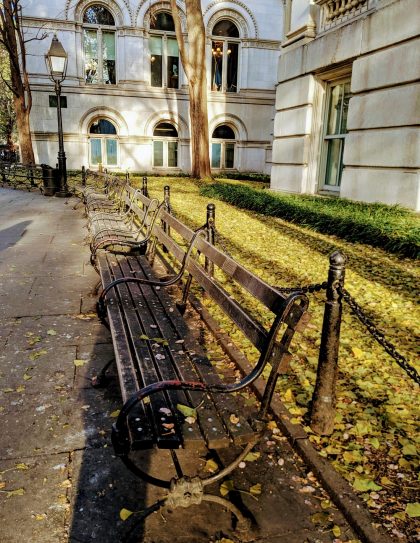‘Tis the season…for harvesting Ginkgo nuts in City Hall Park
I always knew God had a silver lining planned for us when she created the Ginkgo fruit. Just kidding — I don’t actually think God created trees, but I did assume there had to be a purpose to this especially odiferous fall berry. Then I spotted folks collecting the fruit last year this time, and by luck and some quality time on the City Hall Park benches, spotted someone again this year.
Turns out the nuts can be found as bar snacks in Japan, in Cantonese stir fry and as garnish on a Korean stew called Sinseollo. They are high in niacin, starch and protein and low in fat, but they also have a toxin that experts think destroy vitamin B6, especially in children. Most recommend eating them in small quantities (like the Hong Kong Centre for Food Safety).
Plants For a Future, a British charity that works on sustainable horticulture. described their taste this way: “A soft and oily texture, the seed has a sweet flavour [sic] and tastes somewhat like a large pine nut. The baked seed makes very pleasant eating, it has a taste rather like a cross between potatoes and sweet chestnuts.”
But be warned: the skin of the fruit has the same chemical as poison ivy, and can cause blisters. Wear gloves for your next foraging outing.

















Thanks for bringing attention to this special urban tree species. Heres a great read for all gingko aficionados. I heard Peter Crane speak at an arborists conference several years ago. What a great read and with the tree biology + tree sex geared to the plant novice.
https://en.wikipedia.org/wiki/Peter_Crane
https://yalebooks.yale.edu/book/9780300213829/ginkgo